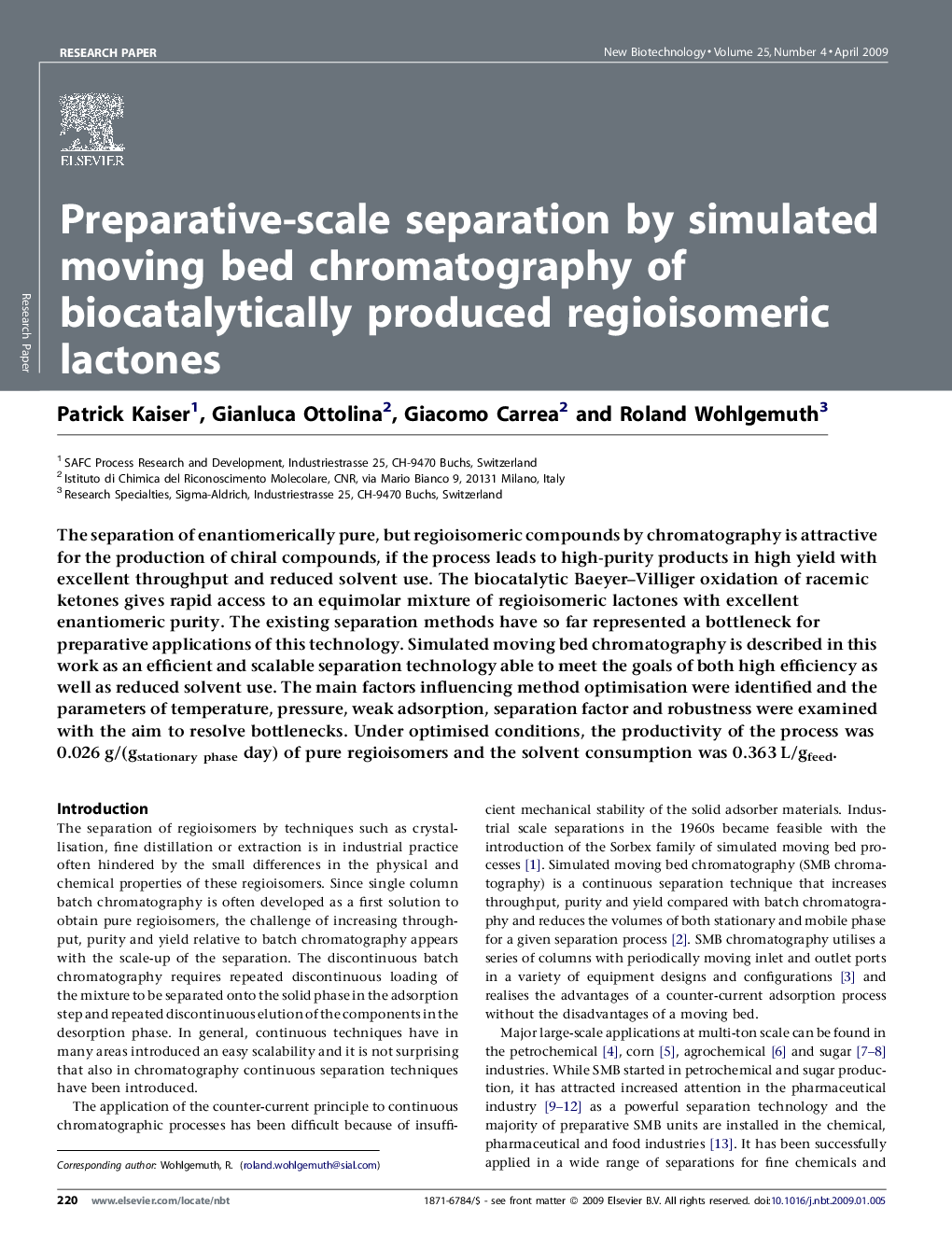| Article ID | Journal | Published Year | Pages | File Type |
|---|---|---|---|---|
| 34085 | New Biotechnology | 2009 | 6 Pages |
The separation of enantiomerically pure, but regioisomeric compounds by chromatography is attractive for the production of chiral compounds, if the process leads to high-purity products in high yield with excellent throughput and reduced solvent use. The biocatalytic Baeyer–Villiger oxidation of racemic ketones gives rapid access to an equimolar mixture of regioisomeric lactones with excellent enantiomeric purity. The existing separation methods have so far represented a bottleneck for preparative applications of this technology. Simulated moving bed chromatography is described in this work as an efficient and scalable separation technology able to meet the goals of both high efficiency as well as reduced solvent use. The main factors influencing method optimisation were identified and the parameters of temperature, pressure, weak adsorption, separation factor and robustness were examined with the aim to resolve bottlenecks. Under optimised conditions, the productivity of the process was 0.026 g/(gstationaryphase day) of pure regioisomers and the solvent consumption was 0.363 L/gfeed.
